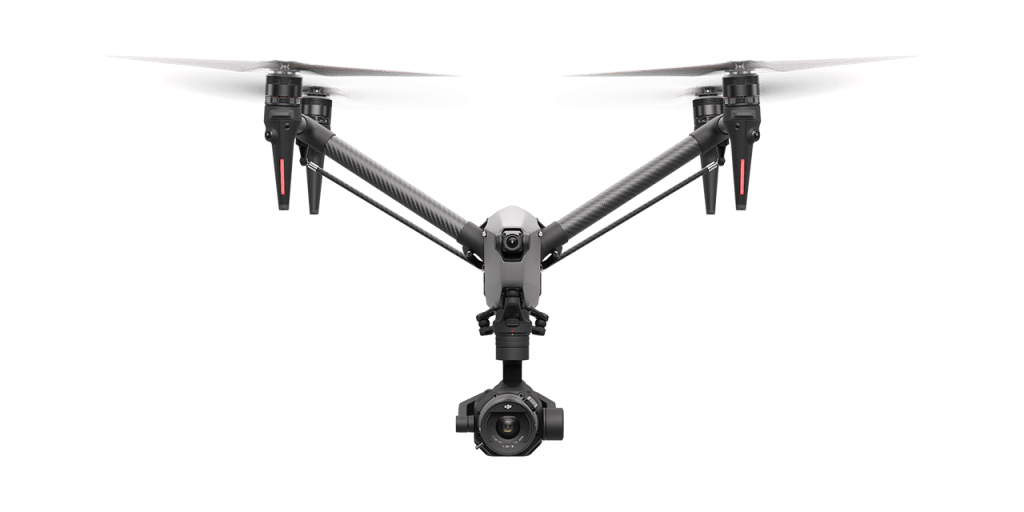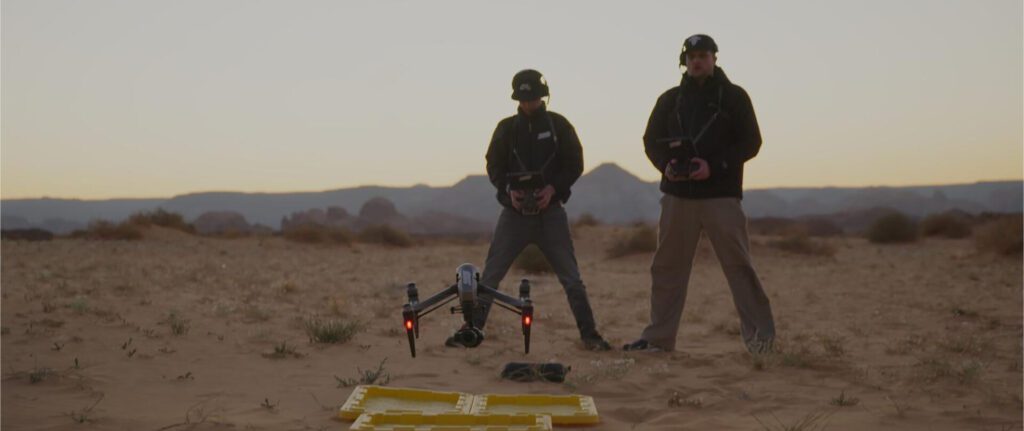What does a cam-op in our Drone team do? 4 April 2024
Why does Cineshoots always work with a drone team of minimum 2 persons, the pilot and the cam-op? Drone teams have become an integral part of the film industry, revolutionizing the way aerial shots are captured. These teams consist of skilled professionals who work together to operate drones and capture stunning footage from unique perspectives. One crucial role within a drone team is that of the Camera Operator, or Cam-Op. The Cam-Op is responsible for operating the camera attached to the drone and ensuring that high-quality footage is captured.
Key Takeaways
- Cam-Ops play a crucial role in drone teams, operating the camera equipment during shoots.
- Qualifications needed to become a Cam-Op include a drone pilot license and an EU license.
- Communication and collaboration are essential for a successful drone team.
- Planning and logistics are crucial for preparing for a drone shoot.
- Post-production editing and enhancing of footage is an important part of a Cam-Op’s role.
The Role of a Cam-Op in a Drone Team
The Cam-Op plays a vital role in a drone team as they are responsible for operating the camera and capturing the footage that will be used in the final production. They work closely with the drone pilot to ensure that the shots are framed correctly and that the camera movements are smooth and precise. The Cam-Op must have a keen eye for detail and be able to anticipate the needs of the director or cinematographer.
In addition to operating the camera, the Cam-Op is also responsible for monitoring the video feed from the drone’s camera to ensure that the shots are in focus and properly exposed. They must be able to make adjustments on the fly to ensure that the footage is of the highest quality. The Cam-Op must also be able to communicate effectively with the rest of the team, including the director, cinematographer, and drone pilot, to ensure that everyone is on the same page and working towards a common goal.
The Importance of Communication and Collaboration within a Drone Team
Communication and collaboration are crucial within a drone team to ensure that everyone is working together towards a common goal. The Cam-Op must be able to effectively communicate with the rest of the team, including the director, cinematographer, and drone pilot, to ensure that everyone is on the same page and working towards capturing the desired shots.
Effective communication allows for better coordination between the Cam-Op and the rest of the team. For example, if the director wants a specific shot or camera movement, it is essential that the Cam-Op understands their vision and can execute it accurately. Similarly, if the drone pilot needs to adjust the flight path or altitude of the drone, they must be able to communicate this information to the Cam-Op in real-time.
Collaboration within a drone team also allows for creative input from all members. The Cam-Op may have ideas for unique shots or camera movements that can enhance the overall production. By working together and sharing ideas, the team can create truly exceptional footage.
Preparing for a Drone Shoot: Planning and Logistics
Before a drone shoot, careful planning and logistics are essential to ensure that everything runs smoothly on the day of filming. This includes scouting locations, obtaining necessary permits or permissions, and coordinating with other crew members.
Scouting locations is crucial as it allows the team to identify potential obstacles or hazards that may affect the flight path of the drone or limit camera movements. It also allows the team to determine the best angles and perspectives for capturing the desired shots. Additionally, obtaining permits or permissions is necessary to ensure that the team can legally fly the drone in a specific area and avoid any legal issues.
Coordinating with other crew members is also important to ensure that everyone is aware of the schedule and their roles on the day of filming. This includes communicating with the director, cinematographer, and drone pilot to discuss shot lists, camera movements, and any specific requirements for the shoot.
Setting Up the Drone and Camera Equipment
Once on location, setting up the drone and camera equipment is a crucial step in preparing for a shoot. The Cam-Op must ensure that all equipment is in working order and properly calibrated before taking off.
First, the Cam-Op must check that the drone is fully charged and that all batteries are functioning correctly. They must also ensure that the propellers are securely attached and that there are no visible signs of damage or wear. Additionally, they must calibrate the drone’s compass and GPS to ensure accurate flight control.
Next, the Cam-Op must set up the camera equipment. This includes attaching the camera to the gimbal, which stabilizes the camera during flight, and ensuring that all cables are properly connected. They must also check that the camera settings are correct, including resolution, frame rate, and exposure settings.
Operating the Drone and Camera During a Shoot

During a shoot, it is essential that the Cam-Op operates the drone and camera with precision to capture high-quality footage. They must be able to anticipate movements and adjust camera settings on the fly to ensure that shots are properly exposed and in focus.
The Cam-Op must work closely with the drone pilot to coordinate movements and ensure that shots are framed correctly. They must communicate effectively with the pilot to relay any adjustments or changes needed to capture the desired shots. Additionally, they must monitor the video feed from the camera to ensure that shots are properly framed and in focus.
The Cam-Op must also be aware of any potential hazards or obstacles that may affect the flight path of the drone. This includes monitoring weather conditions, such as wind or rain, and adjusting flight plans accordingly. They must also be aware of any potential safety risks, such as nearby buildings or power lines, and take appropriate precautions to avoid accidents.
Troubleshooting and Problem-Solving During a Shoot
During a shoot, unexpected issues may arise that require troubleshooting and problem-solving skills. The Cam-Op must be able to think quickly on their feet and find solutions to ensure that filming can continue smoothly.
For example, if the camera loses connection with the drone or if there is interference in the video feed, the Cam-Op must be able to troubleshoot the issue and find a solution. This may involve adjusting camera settings, changing frequencies, or relocating the drone to a different position.
Additionally, if weather conditions change suddenly, such as a gust of wind or rainstorm, the Cam-Op must be able to react quickly and adjust flight plans accordingly. This may involve landing the drone temporarily until conditions improve or finding an alternative location to continue filming.
Future of Drone Technology and the Role of Cam-Ops in the Film Industry
The future of drone technology holds exciting possibilities for the film industry. As drones become more advanced and capable of carrying larger cameras and equipment, the role of Cam-Ops will continue to be essential in capturing high-quality footage.
While drones can autonomously fly and capture footage, the expertise and creative input of a Cam-Op cannot be replaced. A skilled Cam-Op understands how to frame shots creatively, adjust camera settings on the fly, and anticipate the needs of the director or cinematographer. They bring a level of artistry and technical knowledge that is crucial in capturing stunning aerial shots.
As drone technology continues to evolve, it is likely that new roles and responsibilities will emerge within drone teams. However, the role of the Cam-Op will remain vital in ensuring that high-quality footage is captured and that the director’s vision is brought to life on screen.
In conclusion, drone teams and Cam-Ops play a crucial role in the film industry by capturing stunning aerial shots from unique perspectives. The Cam-Op’s responsibilities include operating the camera attached to the drone, ensuring high-quality footage is captured, and collaborating with other team members. To become a Cam-Op, qualifications such as a drone pilot license and EU license are necessary. Effective communication and collaboration within a drone team are essential for capturing desired shots. Proper planning and logistics are required before a drone shoot to ensure everything runs smoothly. Setting up the drone and camera equipment correctly is crucial for capturing high-quality footage. During a shoot, troubleshooting skills are necessary to handle unexpected issues. Post-production involves editing and enhancing footage captured by a Cam-Op. The future of drone technology will continue to rely on the expertise and creative input of Cam-Ops in the film industry.
If you’re curious about the role of a cam-op in a drone team, you might also be interested in reading this article on CineShoots.com. They recently published an informative piece on the DJI Inspire 3, which is considered the ultimate cinema drone. This article dives into the advanced features and capabilities of the Inspire 3, highlighting how it can enhance the work of a cam-op and revolutionize aerial cinematography. To learn more about this cutting-edge drone and its potential impact on the industry, check out the article here.
FAQs
What is a cam-op in a drone team?
A cam-op in a drone team is a camera operator who operates the camera on a drone during filming.
What are the responsibilities of a cam-op in a drone team?
The responsibilities of a cam-op in a drone team include operating the camera on the drone, adjusting camera settings, framing shots, and ensuring that the footage captured is of high quality.
What skills are required to be a cam-op in a drone team?
To be a cam-op in a drone team, one needs to have a good understanding of camera settings, framing, and composition. They should also have experience in operating drones and be able to work well in a team.
What equipment does a cam-op in a drone team use?
A cam-op in a drone team uses a camera mounted on a drone, a remote control to operate the drone, and a monitor to view the footage being captured.
What are the benefits of having a cam-op in a drone team?
Having a cam-op in a drone team ensures that the footage captured is of high quality and meets the requirements of the project. It also allows for more creative shots and angles to be captured, which can enhance the overall production value of the project.
0

